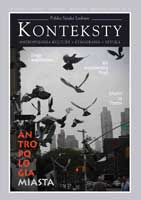Transkrypcje Gesamtkunstwerku
The Transcriptions of the Gesamtkunstwerk
Author(s): Gabriela ŚwitekSubject(s): Anthropology
Published by: Instytut Sztuki Polskiej Akademii Nauk
Keywords: anthropology; Gesamtkunstwerk; modernism
Summary/Abstract: The article addresses the question of the Gesamtkunstwerk as a key-word with which to describe the ideal of modern culture. The programme of a Gesamtkunstwerk was first explicitly formulated in the mid-nineteenth century by Richard Wagner in his essays Art and Revolution and The Artwork of the Future written in exile in Zurich after the failure of the German revolution in 1849. Traditionally seen as the invention of the nineteenth-century, the notion of Gesamtkunstwerk, has been applied to a great variety of phenomena, ranging from the theatre, music, architecture, urban projects and political systems. Despite the elusive nature of the concept, some attempts have been made to set forth its essential characteristics; Harald Szeemann’s exhibition Der Hang zum Gesamtkunswerk. Europäische Utopien seit 1800 (Zurich, 1983) is a case in point. As Odo Marquard notes, the concept of Gesamtkunstwerk is already implied in Schelling’s philosophy of art and its identity system: the system (das Gesamte) becomes an artwork and the artwork becomes a system. Although the early German Romantics did not use the term itself, Friedrich Schlegel’s famous Athenaeum Fragment 116 is also considered as an anticipation of the nineteenth-century concept of Gesamtkunstwerk. The Romantic claim for the synthesis of the arts and poeticization of life opened a path for a modern utopia, where art has been endowed with a ‘redemptive’ power, and had far-reaching consequences for the development of modern aesthetics. Although the notion of the Gesamtkunstwerk now seems archaic or ‘suspicious’ – especially in the context of postmodernism and its valuation of the fragmentary – it has reappeared in the expanded field of contemporary art and architecture, especially in happenings, installations and projects in public spaces
Journal: Konteksty
- Issue Year: 2008
- Issue No: 03-04
- Page Range: 47-53
- Page Count: 6
- Language: Polish
- Content File-PDF

